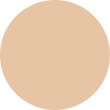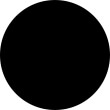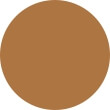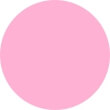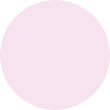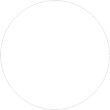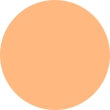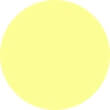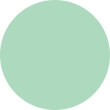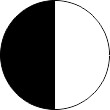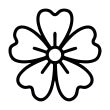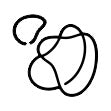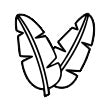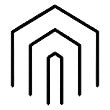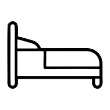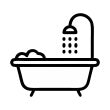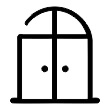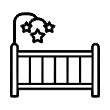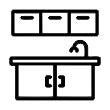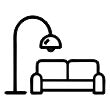Learn How To Install Unpasted Wallpaper And Transform Your Space
Introducing Matte Durable 275, our heavy-weight premium non-woven unpasted wallpaper featuring a smooth ultra matte surface. With its exceptional printing capabilities using latex technologies, this PVC-free material ensures excellent print results.
Designed for convenience, Matte Durable 275 is 100% paste the wall and strippable, making it easy to install and remove. Its durability makes it ideal for high-traffic environments prone to wear and tear, such as playrooms, restaurants, and office spaces. Whether for commercial properties or homes, this wallpaper is built to withstand the demands of daily use.
When installing unpasted wallpaper, proper wall preparation is essential. Ensure a dust-free, smooth, clean wall surface, and address any sharp-edged wall holes beforehand. We recommend using paint finishes such as Eggshell, Satin, or Semigloss for the best results.
Additionally, walls that have been recently painted or primed should be allowed to dry for 30 days before installing the wallpaper. Take into consideration that unpasted wallpaper may not adhere well to walls with Washable, Scrubbable, or No-VOC paint. For further guidance, please refer to our wallpaper Safety Information Guidelines.
With our wallpaper, you can enjoy a premium experience with exceptional durability, easy installation, and a smooth ultra matte finish. Transform your space with confidence and style, knowing that our wallpaper is designed to meet your needs and exceed your expectations.
Why Is Professional Installer Recommended While Installing Unpasted Wallpaper?
Professional installers are highly recommended for installing unpasted wallpaper due to their expertise, ability to achieve proper adhesion, skill in surface preparation, time efficiency, handling of complex areas, and ability to avoid common installation mistakes.
However, suppose you still choose to install the wallpaper yourself. In that case, you can follow the instructions in this guide for installing unpasted wallpaper.
GOT TEXTURED WALLS?
Avoid using Unpasted wallpapers on textured or damaged walls. Textured walls have irregularities on the surface, making them unsuitable for application. Ensure a smooth and flawless surface for best results.

Instructions To Follow Before Beginning Wallpapering
- Upon receiving your order, carefully unpack and inspect its contents, even if you do not plan to install it immediately.
- Before installation, thoroughly examine the color consistency, panel match, or pattern repeat across your entire order.
- If you notice any defects or flaws in the wallpaper, refrain from installing it. Contact us first for further assistance.
Getting A Head Start
Preparation Of Your Walls For Unpasted Wallpaper
Surface Preparation:
- Ensure your wall is smooth, clean, and free from dust.
- Patch any damaged areas to avoid tearing the wallpaper.
- Walls painted No-VOC paints are not recommended for unpasted wallpaper.
Surface Color And Finish:
- For optimal results, ensure the surface has a light, solid color. Preferred primer and paint finishes include Eggshell, Satin, and Semigloss, while Gloss and Matte options are also acceptable. (Note: Matte may cause paint damage during removal).
- Recently primed or painted walls should dry for at least 30 days before installation.
Installation Recommendations:
- Avoid installing on textured walls.
- Do not apply over "scrubbable" paints.
Improving Painted Wall Surface:
- Create a solution of 30% isopropyl alcohol and 70% water.
- Wipe the solution over the entire wall using a clean, lint-free rag.
- Allow the wall to dry completely.
- Install a test swatch to ensure proper adhesion before proceeding with a larger wallpaper order.
Electrical Precautions:
- Safely remove outlet covers and light switch plates in areas where the wallpaper panels will be installed.
- Turn off the power before working on these areas.
Cleaning The Wall:
- Clean the wall's surface using a mild cleaner and damp cloth.
- The surface needs at least 24 hours to properly dry.
Learn More On Cleaning The Wall - HERE
Collect Your Necessary Tools
- Level
- Wallpaper Adhesive
- Paste Brush Or Napped Roller
- Wallpaper Smoothing Brush
- Putty Knife (6” Metal Works Best)
- Sharp Utility Knife With Extra Blades
- Painter’s Tape
- Pencil
- Bucket Of Clean Water
Recommended Wallpaper Adhesive
- Consider Roman PRO-888 Ultra Clear Strippable Adhesive for excellent adhesion and long working time.
- Or opt for Roman ECO-888 Premium Clear Strippable Wallcovering Adhesive for an odor-free experience and excellent tack.
These adhesives make repositioning your wallpapers a breeze. Get ready to transform your space with the convenience and versatility of unpasted wallpaper.
Find A Friend And Plan Your Schedule
Find a caring friend to assist you with hanging wallpaper, as it requires two people. Make sure to set aside a full day for the task, as this will help maintain a steady and precise hand throughout the installation process.
Prepare For Installation:
Remove switch and socket covers, as well as window treatment hardware.
Lay Out Your Wallpaper:
- Unroll each roll in the same direction.
- Each roll will have the panel number at the top left. It is mandatory to install each panel according to this number.
Choose Where To Start Hanging:
- When installing wallpaper on just one wall, commence the installation process from the left side and proceed towards the right.
- It is recommended to install murals in sequential order, starting with the lowest number (1) from left-to-right direction.
- If installing across one, two, or three walls, begin hanging at the farthest left or right corner and continue in one direction until you finish.
- The final panel may not align seamlessly with the first when installed on all four walls. Start hanging the first panel at an inconspicuous point in the room, such as behind an open door or a taller piece of furniture, to minimize visual separation.
Important Note For Installations With Different Wall Heights:
- It is recommended to order all rolls at the longest wall height.
- Using rolls of different lengths can make it challenging to align the patterns due to the vertical design repeat.
Before starting the installation process, follow these steps to properly lay out your wallpaper.
Hanging The First Roll
To safeguard your workspace from glue and water, it is advised to place a drop cloth or tarp on the floor.
Creating A Guide For Your First Panel:
- Lay the first panel face down on a clean, flat surface.
- To start installing, use a weight attached to a string (like a plumb bob), a tool called a level, or a laser level to create a straight vertical line. You can either tape the line or draw it lightly. It's a good idea to regularly check if the line is level as you continue with the installation process.
- Use a paint roller or a wallpaper brush to apply the adhesive evenly to the back of the first wallpaper panel. Make sure to cover the entire surface with a consistent layer of adhesive.
- When you're applying adhesive, make sure to roll or brush away from the center and towards the edges. This helps prevent too much material from building up on the front edges of the paper.
- Booking the wallpaper: "Booking" refers to the process of folding the wallpaper onto itself after applying the adhesive. This allows the adhesive to activate and helps prevent it from drying out.
- Resting time: After booking, let the wallpaper rest for the recommended duration specified by the adhesive manufacturer. This resting time activates the adhesive fully and ensures proper adhesion during installation.
Starting To Hang The First Panel:
- Unfold the top half of the booked panel and position it against the upper section of the wall, allowing for a slight overlap with the ceiling.
Before smoothing the top of the panel onto the wall, make sure the paper's edge is in line with your level line. Start from the top, working your way down and outward from the centre.
- Smooth out any air bubbles or wrinkles using a wallpaper smoother or a clean, damp sponge. Peel the panel back and reapply if a bubble is discovered after it has been installed on the wall.
- Keep working on the wallpaper from the top to the bottom. Start by smoothing it from the centre towards the edges using either a wallpaper smoother or a smoothing brush. This will help get rid of any air bubbles. Then, unfold the bottom half of the paper and smooth it down completely.
Removing Excess Adhesive
- Excess glue should be removed from the wallcovering surface and seam using a natural sponge and a soft bristle brush that is often rinsed in warm water and dried with a clean cotton towel.
Overlapping Each Following Panel
- Take the second panel.
- Determine the appropriate overlap, around 0.5" (1-2 cm), to smoothly install it along the edge of the first panel.
- Start at the top and properly align the paper along the top edge of the wall.
- Repeat the steps from the first panel, working in 4-6" segments down the wall and continuously ensuring that the pattern is aligned before using the squeegee.
Repeating For Subsequent Panels:
- Finish the installation by applying the remaining panels to complete the wallpaper installation. If repositioning is necessary, gently remove the paper by pulling it off parallel to the wall with consistent pressure, avoiding stretching the material.
- Ensure to align the pattern correctly and overlap the panels by the appropriate distance specified for a seamless and visually pleasing result.
Installing Near Windows And Doors, Corners, Plugs, And Panels:
Around Windows Or Doors:
- Determine how much paper you need to install around the moulding edges of windows or doors.
- Trim away the bulk of the paper to help ease the adhesion, but wait until all wallpaper panels are installed before trimming the final excess to the edges.
Around Corners:
- When installing around interior and exterior corners, control the installation so that a few inches of paper wrap around the corners instead of trimming right into the corner.
Final Steps
- Trim the edges of the wallpaper panels using a sharp, fresh blade for a clean finish.
- Consider using a stable snap-off knife like the Olfa SAC-1 Graphic Cutter for better control during trimming.
- Ensure straight cuts using a straight edge along the ceiling, baseboards, and vertical corners.
-
Using a straight edge prevents any uneven edges and ensures a professional-looking installation.
Please note that these steps are not intended to substitute the expertise or guidance of a professional installer. When collaborating with a professional, their experience is crucial in determining the most suitable installation approach for your specific space.
Product Cleaning TipsUse a damp microfiber cloth and mild detergent dish soap to clean.
Avoid aggressive rubbing while cleaning.
Removing Unpasted Wallpaper
To remove unpasted wallpaper effectively, follow these 6 simple steps recommended by us:
-
Prepare To Test A Small Area
- Find a small area, approximately 2' x 2', preferably with a seam, to perform the test.
- Use a large putty knife to locate the seam and loosen it from the wall.
- Assess how well the wallpaper is attached and determine the number of layers.
- Take note of whether the wall is plaster or drywall.
IMPORTANT NOTE:
- If your home is over 50 years old, it likely has plaster walls, which are thicker and more durable than drywall.
- Suppose the home is less than 50 years old. In that case, it's likely drywall, requiring extra care to avoid surface damage during wallpaper removal.
- Use a wallpaper scoring tool to gently puncture the paper's surface in a circular motion with even pressure.
- Be careful not to press too hard; the goal is to create light perforations for the wallpaper remover to penetrate.
- Apply the wallpaper remover to the entire test area, ensuring all the wallpaper is thoroughly wet.
- Wait for 15 minutes before attempting to peel off the paper.
- It's important to allow the remover solution to work and saturate the wallpaper during this time.
- Try removing the old wallpaper from the test area.
- You are ready to start the project if the wallpaper peels off easily.
2. Protect Furniture And Prepare The Room
- Move furniture away from the walls and cover the floor with painter's tarps.
- Remove items from the walls and disconnect power from the working area.
- Consider closing AC/heating vents to minimize airflow.
3. Score The Wallpaper
- Use a scoring tool to create small holes in the wallpaper for better penetration.
- Rub the scoring tool in a circular motion with even pressure on the area being worked on.
4. Apply Removal Solution
-
Apply the PIRANHA™ LIQUID SPRAY WALLPAPER REMOVER to the wall, following the product's instructions.
- Ensure the walls remain saturated with the solution to prevent drying.
5. Scrape The Wallpaper
- Once the removal solution has softened the wallpaper paste, start scraping the walls.
- Begin from the wallpaper seam and apply more solutions if necessary.
- Remove any excess paste using the recommended removal solution.
6. Clean Up And Prepare For New Wallpaper
- After removing all wallpaper and paste, use the removal solution to sponge down the walls and eliminate residual paste.
- Ensure a clean surface for new wallpaper or paint by applying Roman PRO-999 Sealer/Primer.
We recommend using ROMAN wallpaper paste solution, ROMAN wallpaper remover, and Roman PRO-999 Sealer/Primer to facilitate the wallpaper removal process and achieve optimal results.
The longevity of wallpaper, and its ease of removal, depends on temperature, humidity, and wall preparation.
A Word From WallTrendz
Selecting the suitable wallcovering adhesive is essential and requires consideration of various factors such as clean-up, ease of removal, and application time.
-
A sea sponge is recommended for cleaning up residue.
-
The wallcovering should only be installed if the temperature is maintained above 55 degrees Fahrenheit in both areas of installation and storage.
-
During construction, wallcovering should be the final finishing procedure in commercial spaces or domestic environments. It should not be applied if there is important construction, painting, or general remodelling still going on.
-
There are only two major commercial grade wallcovering adhesive manufacturers in the US: Gardner-Gibson and Roman Decorative Products. By adhering to general guidelines, these manufacturers' branded and private-label adhesives can effectively facilitate successful installations.
-
Always use the recommended compatible primers with the adhesive brand you choose.
-
Water-based acrylic and latex primers are usually preferred over other types of primers.
- Pay attention to individual jobsite details and ask questions to ensure a successful installation.
Frequently Asked Questions
Q: Do I Need To Prepare The Wall Before Hanging Traditional Unpasted Wallpaper?
Ans: Yes, it is important to ensure that the wall is clean, dry, and smooth before hanging traditional unpasted wallpaper. Any bumps, cracks, or holes should be repaired, and the wall should be sanded if necessary.
Q: How Do I Apply Adhesive To The Traditional Unpasted Wallpaper?
Ans: Apply an even coat of wallpaper adhesive to the back of the wallpaper panel using a paint roller or a wallpaper brush.
Q: What Is The Booking Method, And How Do I Use It?
Ans: The booking method is a technique where you fold the wallpaper over itself with the adhesive side facing inward and let it rest for a few minutes. This allows the wallpaper to absorb the adhesive and become more pliable, making it easier to handle during installation.
Q: How Do I Hang The Wallpaper Panels?
Ans: Steps to Hang Wallpaper Panels:
- Unfold and position the top section of the wallpaper panel on the wall, aligning it with your starting point.
- Smooth the top portion onto the wall, working from the top down and center outwards.
- Use a wallpaper smoother or damp sponge to remove air bubbles or wrinkles.
- If bubbles appear, gently peel back and reapply the panel.
- Continue working from top to bottom, smoothing out air bubbles with a smoother brush.
- Unfold and smooth down the bottom half of the panel for a seamless installation.
- Follow these steps for successful wallpaper panel hanging.
Q: Can I Remove Traditional Unpasted Wallpaper Easily?
Ans: Yes! It is easy to remove. We recommend applying the PIRANHA™ LIQUID SPRAY WALLPAPER REMOVER to the wall, following the product's instructions.
Ensure the walls remain saturated with the solution to prevent drying. Once the removal solution has softened the wallpaper paste, start scraping the walls. Begin from the wallpaper seam and apply more solutions if necessary.
After removing all wallpaper and paste, use the removal solution to sponge down the walls and eliminate residual paste.
